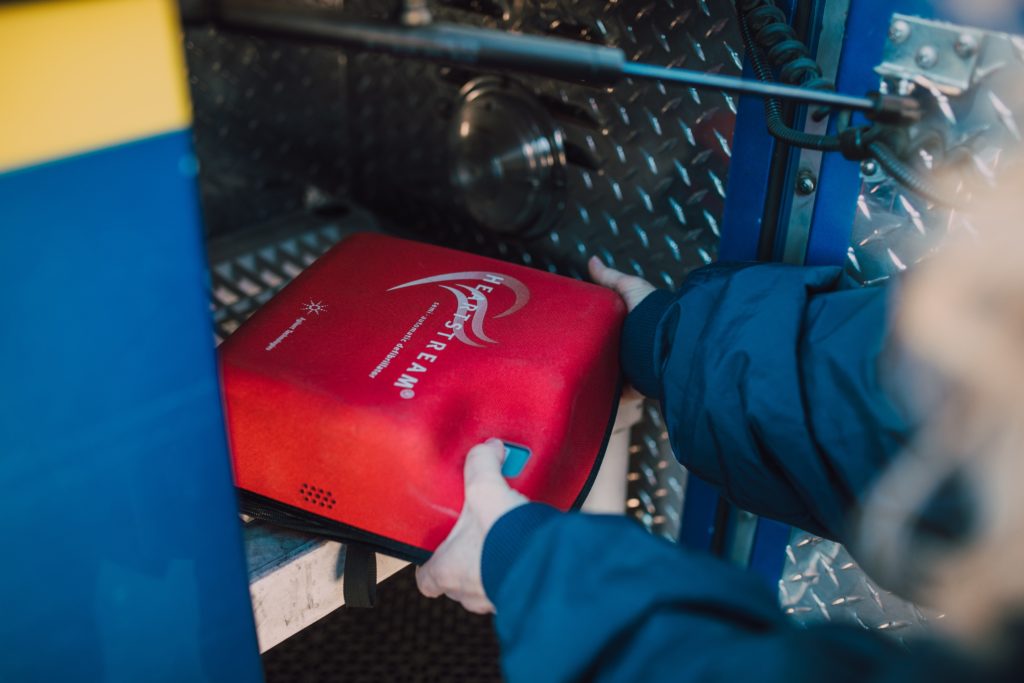Defibrillator Types: How do they work?
A defibrillator is a critical piece of life-saving equipment. They are used in most healthcare settings to help support patients suffering from cardiac difficulties. However, there are a wide range of defibrillators on the market today. It can be confusing to navigate and understand the various defibrillator types and how each performs and supports patients.
Here we will discuss the various types of defibrillators currently on the market to help you understand what they do and what circumstances they are most suited to.

What is a defibrillator?
A defibrillator is a medical device designed to send electrical energy, in the form of a shock, to the tissues of the heart. The aim of using this device is to treat cardiac arrest.
The need for this device generally arises when a patient develops life-threatening arrhythmias, such as ventricular tachycardia or ventricular fibrillation that occur when the contractions of the ventricles become irregular.
Defibrillators usually have ECG (electrocardiogram) leads and adhesive paddles (or patches). The adhesive electrodes are patches placed on the patient’s chest before delivering the electric shock.
Defibrillator Types
There are a range of different defibrillator types used today across numerous healthcare settings. These include AEDs (automated external defibrillators), WCDs (wearable cardiac defibrillators), and ICDs (implantable cardioverter-defibrillators). Some other defibrillator types include manual external defibrillators and manual internal defibrillators.
Here we will discuss the major types of defibrillators and the indications and uses of each.
Automated external defibrillators (AED)
These defibrillators use computer technology that makes it easier to analyze the cardiac rhythm and determine if the rhythm is shockable more effectively.
An AED is a battery-operated, portable, lightweight device that checks the cardiac rhythm, and then sends a shock to the tissue of the heart to restore normal heart rate and rhythm. This device is used to help patients suffering from cardiac arrest.
AEDs are often installed in medical facilities, airports, hotels, government offices, sports stadiums, and schools for use in emergency situations.
These devices usually include sticky pads with sensors installed, known as electrodes. These electrodes are attached to the chest of the patient. The electrodes pass information about the patient’s cardiac rhythm to an in-built computer in the device. The computer analyzes the cardiac rhythm to assess whether an electric shock is required. If needed, the device delivers the shock through the electrodes.
Implantable cardioverter-defibrillators (ICDs)
Implantable cardioverter-defibrillators, also called automatic internal cardiac defibrillators (AICDs), are designed to monitor the patient’s heart rhythm constantly, similar to a pacemaker.
These devices can detect ventricular fibrillation, supraventricular tachycardia, ventricular tachycardia, and atrial fibrillation.
When the device detects an abnormal rhythm, it automatically calculates the voltage of the shock needed for restoring normal cardiac functions.
ICDs are placed in the chest or the stomach area through surgery. The device can evaluate heart activities for arrhythmias. Arrhythmias can affect the flow of blood from the heart to the rest of the body and even cause the heart to stop beating.
An ICD can send a shock to restore normal heart rhythm when an abnormal rhythm is detected.
An ICD also delivers a low-energy shock. This shock can slow down or speed up the heart rate, or deliver a high-energy shock for correcting fast and irregular heartbeats. If a low-energy shock does not help to restore the normal heart rhythm, the device may switch to a high-energy shock for defibrillation.
These defibrillators work in a similar way to pacemakers, although pacemakers can only deliver a low-energy electrical shock.
The ICDs can also record the electrical activities of the heart and cardiac rhythm. These recordings allow healthcare providers to modify the programming of the device so it works more efficiently for correcting irregular heartbeats.
Wearable cardiac defibrillators (WCDs)
Further research on ICDs helped with the development of wearable cardiac defibrillators (WCDs). Wearable cardiac defibrillators are portable external defibrillators generally recommended for patients who are not in immediate need of an ICD.
This device is designed to monitor the cardiac activities of the patient continuously 24-hours-a-day. This device only becomes functional when it is worn and delivers a shock to the heart only when needed. Like ICDs, the WCDs can deliver high- or low- energy shocks.
WCDs have sensors attached to the skin. These sensors are connected to a unit that checks the cardiac rhythm and delivers a shock when needed. This device has a belt attached to the vest, which can be worn under clothes.
These defibrillators are programmed to detect a specific cardiac rhythm. When the sensors detect an arrhythmia, they send an alert. The patient can turn off the alerts to prevent a shock if it is not needed. In case the patient does not respond, the device delivers a shock to the heart to correct the abnormal rhythm. This generally happens within a minute.
Conclusion
It’s clear to see that defibrillators play a critical part in supporting patients with cardiac issues. However, the different defibrillator types each have a role that is very specific to a particular environment. AEDs are the obvious choice in most instances for supporting the public and workplaces. Use of the more complex types, such as ICDs and WCDs, should only be undertaken in direct consultation with a medical professional.



